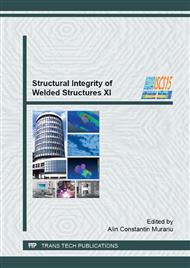p.205
p.211
p.217
p.223
p.229
p.235
p.240
p.246
p.252
Design by Qualification Testing of Reduced Beam Section Welded Connections
Abstract:
Steel moment frames are common systems in multi-storey buildings. Even the relatively low stiffness of the system limits the applicability, they remain popular in seismic applications due to the good dissipation capacity. Considered deemed-to-comply in seismic applications, welded beam to column connections experienced serious damages and even failures during strong seismic earthquakes. These failures included fractures of the beam flange-to-column flange groove welds, cracks in beam flanges, and cracks through the column section. To reduce the risk of brittle failure of welded connections, beam weakening near the ends became popular. To assure the desired behavior, i.e. the development of plastic deformations in the reduced beam section zones rather than at the face of the column, proper detailing and sizing is necessary. Today design provisions are limited to long beams, where the effect of shear stresses may be neglected. The application of the same rules for short beams might be non-conservative, and therefore qualification testing is necessary. The study presents the qualification testing of reduced beam sections welded connections of short beams. Both monotonic and cyclic tests were performed and numerical models were validated based on the test data.
Info:
Periodical:
Pages:
229-234
Citation:
Online since:
July 2015
Authors:
Price:
Сopyright:
© 2015 Trans Tech Publications Ltd. All Rights Reserved
Share:
Citation:


